

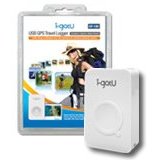 After taking a trip, I usually have a plethora of photos with which to bore unsuspecting family members and co-workers, but occasionally I get some nice snaps, and folks want to know where I took the picture. With the i-gotU GPS Travel Logger, I can show them exactly where.
The i-gotU is a tiny device that takes GPS readings at regular intervals as you move about. The device logs your position and the time the position reading was taken. Later, you can pair up your i-gotU’s GPS data with photos taken with your digital camera. Using the included software, and time recorded by both the i-gotU and your camera, you can easily determine exactly where your photographs were taken. The software integrates with Google maps to plot your travel route and provide indicators to where your photographs were taken. It is important that your camera’s internal clock and the i-gotU are in sync to make it work. The i-gotU get’s its time from the GPS system, so it does not need to be calibrated, so you only need to ensure that your camera reflects the correct time.
After taking a trip, I usually have a plethora of photos with which to bore unsuspecting family members and co-workers, but occasionally I get some nice snaps, and folks want to know where I took the picture. With the i-gotU GPS Travel Logger, I can show them exactly where.
The i-gotU is a tiny device that takes GPS readings at regular intervals as you move about. The device logs your position and the time the position reading was taken. Later, you can pair up your i-gotU’s GPS data with photos taken with your digital camera. Using the included software, and time recorded by both the i-gotU and your camera, you can easily determine exactly where your photographs were taken. The software integrates with Google maps to plot your travel route and provide indicators to where your photographs were taken. It is important that your camera’s internal clock and the i-gotU are in sync to make it work. The i-gotU get’s its time from the GPS system, so it does not need to be calibrated, so you only need to ensure that your camera reflects the correct time.
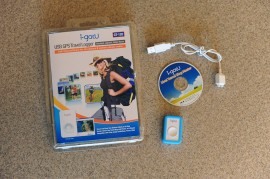
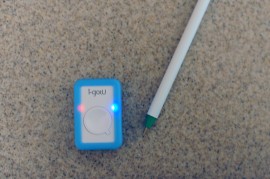 The i-gotU comes with the GPS logger unit, USB cable, and @trip software to make it all work. Also included with the package is the ability to create a free account on the @trip webhosting service where you can upload your photos to a blog-like site so you can share your trip details and photos with others over the web. You can even integrate your trip with social sites like Facebook and MySpace, or use a embedded code generator to embed the trip details in your own website.
The first thing you’ll want to do is install the @trip software and charge the i-gotU. The software is included on a mini CD-ROM and installs easily enough. Charing of the device is done through the provided proprietary USB cable. It takes about 4 hours to fully charge the device. A red indicator light on the face of the device illuminates to indicate charging, and will turn off when charging is complete. Once charging is complete, simply activate the device to start logging by going outside under a clear sky. Hold the large button (the only button) on the front of the device for about 2 seconds. Both a blue and a red indicator light will flash simultaneously indicating a successful GPS lock and the start of GPS logging by the device.
At this time you would begin to travel about with the i-gotU and your camera. Any time you snap a photo, your digital camera records the date and time into the image file of the photo. Likewise, your i-gotU is taking GPS readings every 5 seconds and recording the date and time of each reading. I happened to take a trip to Oregon to do a photo workshop, so this seemed like a great opportunity to try out the i-gotU.
During our workshop, we spent a couple of days traveling up and down the coast of Oregon to some scenic spots to take photos and learn various photo techniques. I took thousands of photos that represent experiments in exposure and composition, so I won’t bore you with all of those, so I only grabbed a couple for the purpose of this review. The i-gotU will run for about two days continuously, so I recharged it each evening when I got back to the hotel.
The i-gotU comes with the GPS logger unit, USB cable, and @trip software to make it all work. Also included with the package is the ability to create a free account on the @trip webhosting service where you can upload your photos to a blog-like site so you can share your trip details and photos with others over the web. You can even integrate your trip with social sites like Facebook and MySpace, or use a embedded code generator to embed the trip details in your own website.
The first thing you’ll want to do is install the @trip software and charge the i-gotU. The software is included on a mini CD-ROM and installs easily enough. Charing of the device is done through the provided proprietary USB cable. It takes about 4 hours to fully charge the device. A red indicator light on the face of the device illuminates to indicate charging, and will turn off when charging is complete. Once charging is complete, simply activate the device to start logging by going outside under a clear sky. Hold the large button (the only button) on the front of the device for about 2 seconds. Both a blue and a red indicator light will flash simultaneously indicating a successful GPS lock and the start of GPS logging by the device.
At this time you would begin to travel about with the i-gotU and your camera. Any time you snap a photo, your digital camera records the date and time into the image file of the photo. Likewise, your i-gotU is taking GPS readings every 5 seconds and recording the date and time of each reading. I happened to take a trip to Oregon to do a photo workshop, so this seemed like a great opportunity to try out the i-gotU.
During our workshop, we spent a couple of days traveling up and down the coast of Oregon to some scenic spots to take photos and learn various photo techniques. I took thousands of photos that represent experiments in exposure and composition, so I won’t bore you with all of those, so I only grabbed a couple for the purpose of this review. The i-gotU will run for about two days continuously, so I recharged it each evening when I got back to the hotel.
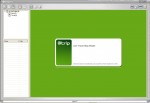
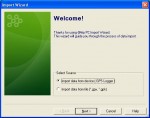
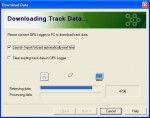 Once my trip for the day was done, I connected the i-gotU device to your PC and started the GPS logging download process. The software will allow you to give the trip a name and will bundle all of the GPS readings under that trip.
Once my trip for the day was done, I connected the i-gotU device to your PC and started the GPS logging download process. The software will allow you to give the trip a name and will bundle all of the GPS readings under that trip.
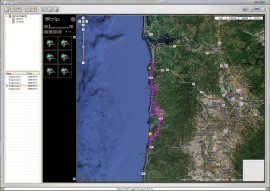 Next, the software will began to plot my route for the day on a Google map. The route is indicated by a colored line on the map.
Next, the software will began to plot my route for the day on a Google map. The route is indicated by a colored line on the map.
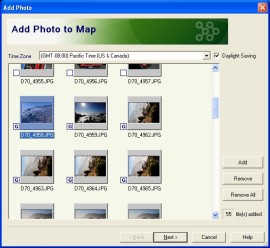
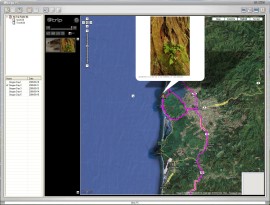 Once the trip is routed, I download my digital camera photos to my computer as I normally would. Once the photos are on the computer, I imported them into the @trip software, and the software began the process of matching my photos’ time and date information with the i-gotU’s GPS data. It then placed graphics of cameras on the Google map, indicating that a photo was taken at that location on the map. Clicking on the camera icon displays a thumbnail of the photo taken at the indicated location.
Pretty cool way of geo-tagging photos, but it doesn’t stop there. The i-gotU’s @trip software is bundled with a free web hosting service to allow you to share your photos with anyone over the internet.
Once the trip is routed, I download my digital camera photos to my computer as I normally would. Once the photos are on the computer, I imported them into the @trip software, and the software began the process of matching my photos’ time and date information with the i-gotU’s GPS data. It then placed graphics of cameras on the Google map, indicating that a photo was taken at that location on the map. Clicking on the camera icon displays a thumbnail of the photo taken at the indicated location.
Pretty cool way of geo-tagging photos, but it doesn’t stop there. The i-gotU’s @trip software is bundled with a free web hosting service to allow you to share your photos with anyone over the internet.
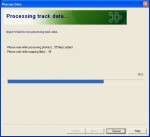
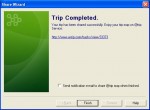 Uploading your trip to the @trip web host is simple. First you create an account, which is simple to do with the @trip software. Once your account is created, you can upload your photos and trip data. After the upload is complete, the software provides you a link to your trip site.
Uploading your trip to the @trip web host is simple. First you create an account, which is simple to do with the @trip software. Once your account is created, you can upload your photos and trip data. After the upload is complete, the software provides you a link to your trip site.
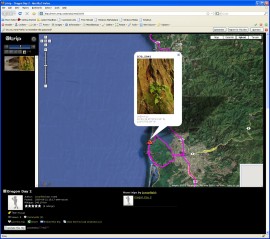 Similar to the desktop software, the @trip website for your trip data displays a map, the route you took as a colored line, and icons indicating where photos were taken.
Similar to the desktop software, the @trip website for your trip data displays a map, the route you took as a colored line, and icons indicating where photos were taken.
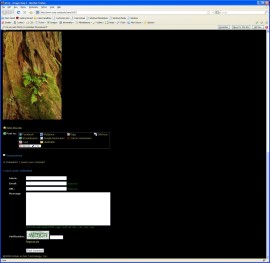 Further down the web page are links for posting your trip data to Facebook, MySpace, and others. Viewers are also able to comment on your photos. Another nice feature of the @trip desktop software, and the website, is the ability to “play back” your trip in an animated fashion. A graphic of a car will move along the plotted route, popping up thumbnails of your photos as the car passes over them.
If you take a lot of photos like I do when you travel, the i-gotU is a great device to have along to track your travels in detail. It’s small enough (approx. 1.75″ x 1.25″ x .5″) to not be noticed. I attached mine to my camera strap with the included silicon rubber case that had an opening in the back to put the camera strap through. The included software is easy to use, and the bundled @trip web hosting service is a nice plus. To sum up my pros and cons:
Pros:
-Small
-Battery life is great
-64,000 GPS waypoints can be tracked in the device’s memory
-Simple one-button operation
-Simple to use software
-@trip web hosting service
Cons
-Proprietary USB cable
-Indicator lights are hard to see in daylight
Further down the web page are links for posting your trip data to Facebook, MySpace, and others. Viewers are also able to comment on your photos. Another nice feature of the @trip desktop software, and the website, is the ability to “play back” your trip in an animated fashion. A graphic of a car will move along the plotted route, popping up thumbnails of your photos as the car passes over them.
If you take a lot of photos like I do when you travel, the i-gotU is a great device to have along to track your travels in detail. It’s small enough (approx. 1.75″ x 1.25″ x .5″) to not be noticed. I attached mine to my camera strap with the included silicon rubber case that had an opening in the back to put the camera strap through. The included software is easy to use, and the bundled @trip web hosting service is a nice plus. To sum up my pros and cons:
Pros:
-Small
-Battery life is great
-64,000 GPS waypoints can be tracked in the device’s memory
-Simple one-button operation
-Simple to use software
-@trip web hosting service
Cons
-Proprietary USB cable
-Indicator lights are hard to see in daylightIf you would like to make a comment, please fill out the form below.
Bad Behavior has blocked 2255 access attempts in the last 7 days.
Most Recent Comments